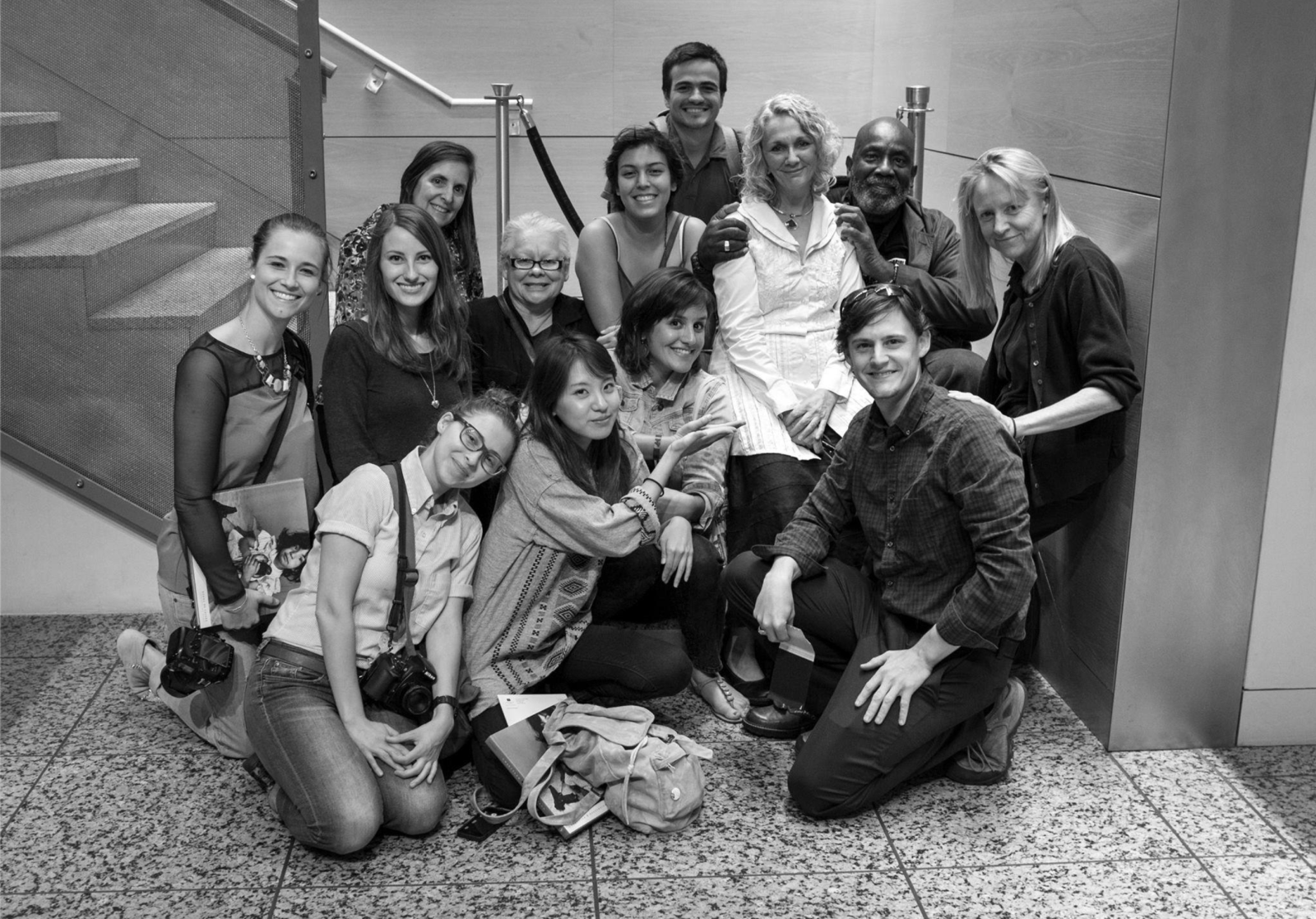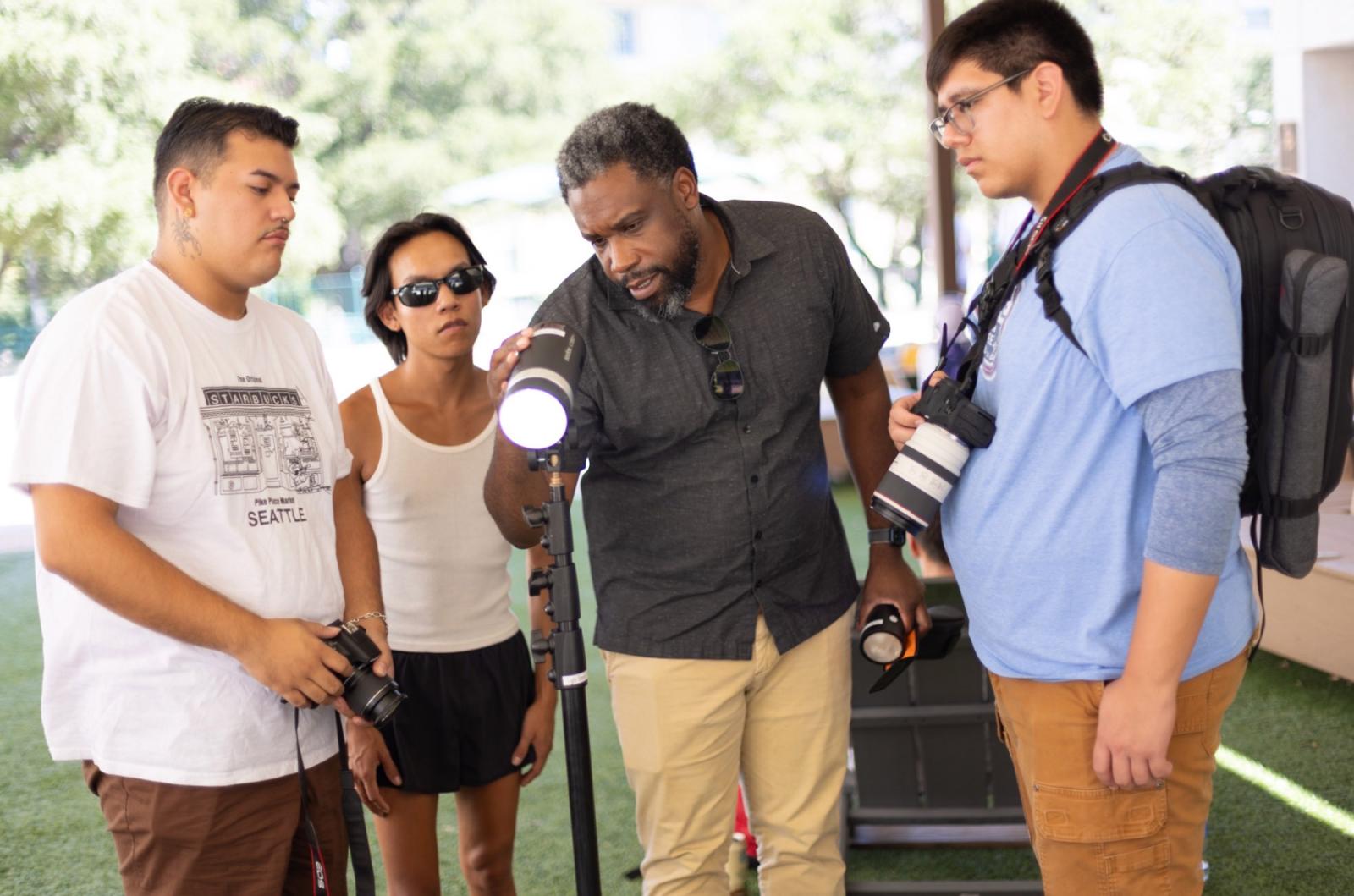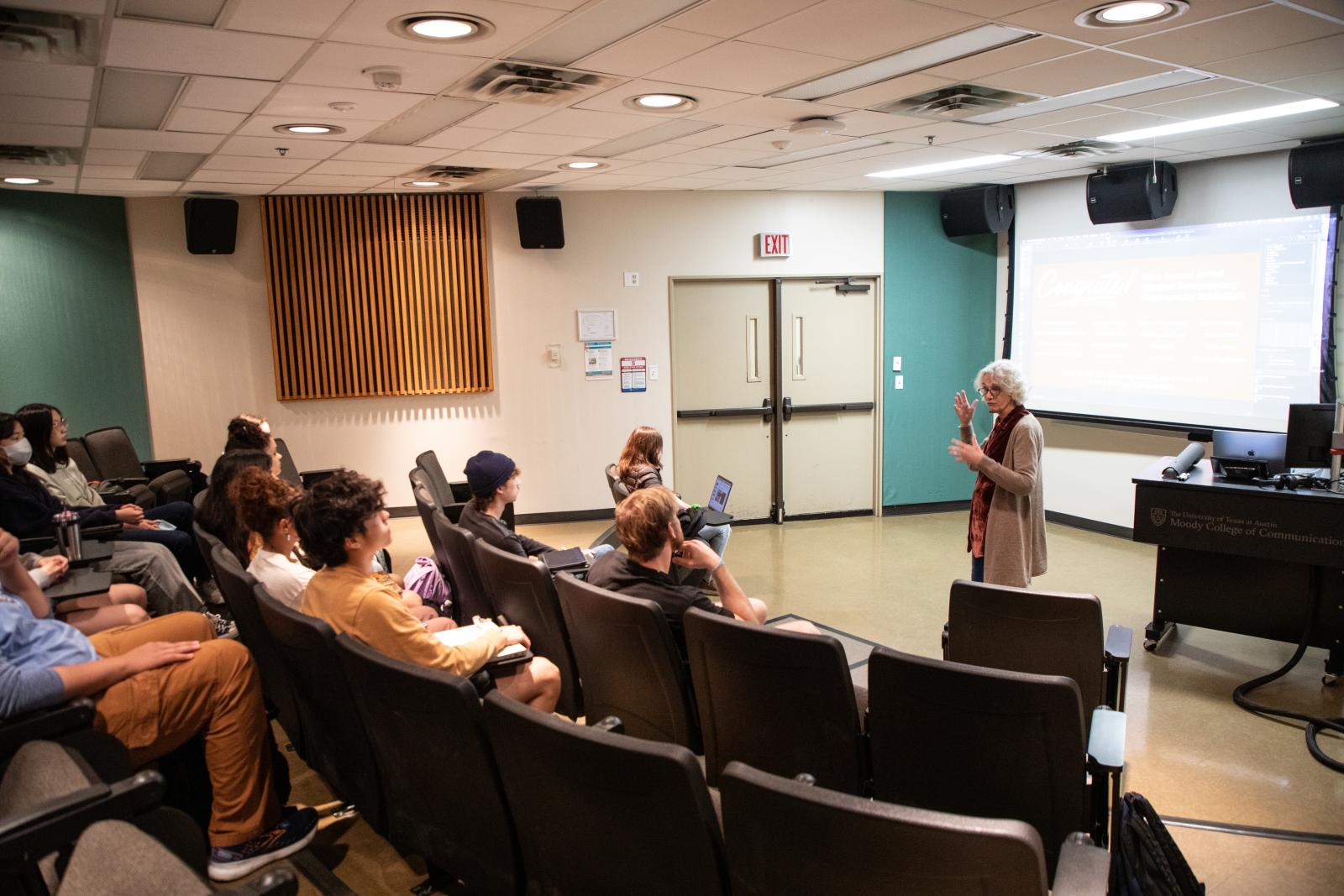The Impact of Photography
Last year, Moody College of Communication School of Journalism and Media associate professor Donna DeCesare and assistant professor Raymond Thompson debuted a new gallery and speaker series to celebrate the art of still photography by University of Texas at Austin’s students and alumni.
To date, the School of Journalism and Media Photo Gallery, located on the third floor of the Dealey Center for New Media, has had four photo exhibitions, including displaying works by photo documentarians David Bacon and Danielle Villasana, as well as a student exhibit.
Currently, the work of Eli Reed, Magnum photographer and former Moody College professor, is on display.
Reed taught photojournalism at UT for 17 years, beginning in 2005. His 30-year career has taken him all over the world. He’s worked with many publications, held exhibitions and published two books. He is also part of the elite international photojournalists collective, Magnum Photos, which is an exclusive group of photographers from around the world dedicated to social justice.

Reed retired in 2021 and has had a great influence on UT students. He recently came back to campus to participate in DeCesare and Thompson’s speaker series.
“We wanted to honor Eli because of the photographer he is,” DeCesare said.
Reed is a stellar example of what someone in photojournalism can do in a lifetime, she said.
“Eli had such a big impact on the program over decades,” Thompson said.
Both DeCesare and Thompson agree that Reed was a natural fit in their series, because of his profound work of capturing people facing injustice.
“Eli really has this very focused way of connecting and making us feel,” DeCesare said.
DeCesare and Raymond shared an example of one of their favorites of Reed’s photographs: a grandmother with her two twin grandsons. The grandmother takes care of them after their parents died from HIV in 2012. It is an example of how Reed is a pro at photographing “the moment,” form and content.
“That's such a beautiful, meaningful image,” Thompson said. “There's so much happening; I mean, when I look at it, it's like I kind of get sucked away into that world.”
Thompson believes it's good for students to see what someone can capture with one photo and what impact it can have.
“I've always been haunted when I first saw Eli’s work, and those things stay in your mind and they last,” DeCesare said. “One picture can have an impact.”
DeCesare and Thompson hope that students see that photographs do not have to be literal documentation but a creation of reaction and feeling.

“Even though Eli says, ‘Don't think about it,’ he's thinking with his heart and his head,” DeCesare said. “Everything is connected and he's feeling it, thinking it, seeing it all at the same time,”
DeCesare believes Reed is a huge reason why some former UT photojournalism students are winning awards today. Many have pursued photo careers after graduation, some even winning Pulitzers or other professional awards.
DeCesare said that sometimes a photographer’s career doesn’t truly get its start until after achieving five or ten years of experience.
“We wanted students to see that and to encourage them to think this is something that they can do.”

The exhibition and speaker series show students that there are careers in photojournalism. DeCesare and Thompson find it important to highlight, respect and elevate photo journalism's role in society. They want students to think and see these stories in a much more complex way than they are, which is something that doesn't happen a lot in journalism. Photos on display look at some of the deeper issues in society.
The room for creativity in photojournalism is quite larger than most people think, DeCesare and Thompson said. Whether your photographs get published in a newspaper, magazine or documentary, you can create work that is bigger and more meaningful than what you see in print and digital media, they said.
The gallery is a way for students and guests to take a step back and look at the images on a wall, instead of scrolling through photos on their phones. It is a process that makes you slow down, look, think and let yourself feel the images, Thompson said.
“I think it's also really important to sort of help students move into a space where they would become much more complex visual thinkers,” he said.
It has been important to DeCesare and Thompson to give students a chance to display their work in the gallery, as well, as they haven’t been able to always show off their hard work. Thompson said, when he was a graduate student in 2010, photojournalism students had to try to publish their work in a gallery somewhere outside the university. They would find a space to do a one-day or night show. DeCesare said that the current gallery is the very first UT has had for photojournalism on campus.
The students, whether Daily Texan photographers or photojournalism students, took initiative to show their work.
Every day, UT students are able to see the photos on the wall when they come out of class, in the same hallway with the Pulitzer Prize-winning journalists on the wall.
“We have that benefit that it's right there,” DeCesare said. “Our faculty can see what work we're bringing in to expose students to, and then with our students’ show, everybody gets to share and recognize our own students for the work that they're doing.”
Photojournalism is alive and strong at UT, DeCesare and Thompson said. They are making sure the gallery and speaker series continue to create drive and inspiration for students so that they can see that photojournalism is worth pursuing, that it can make an impact and that it can last a lifetime.

